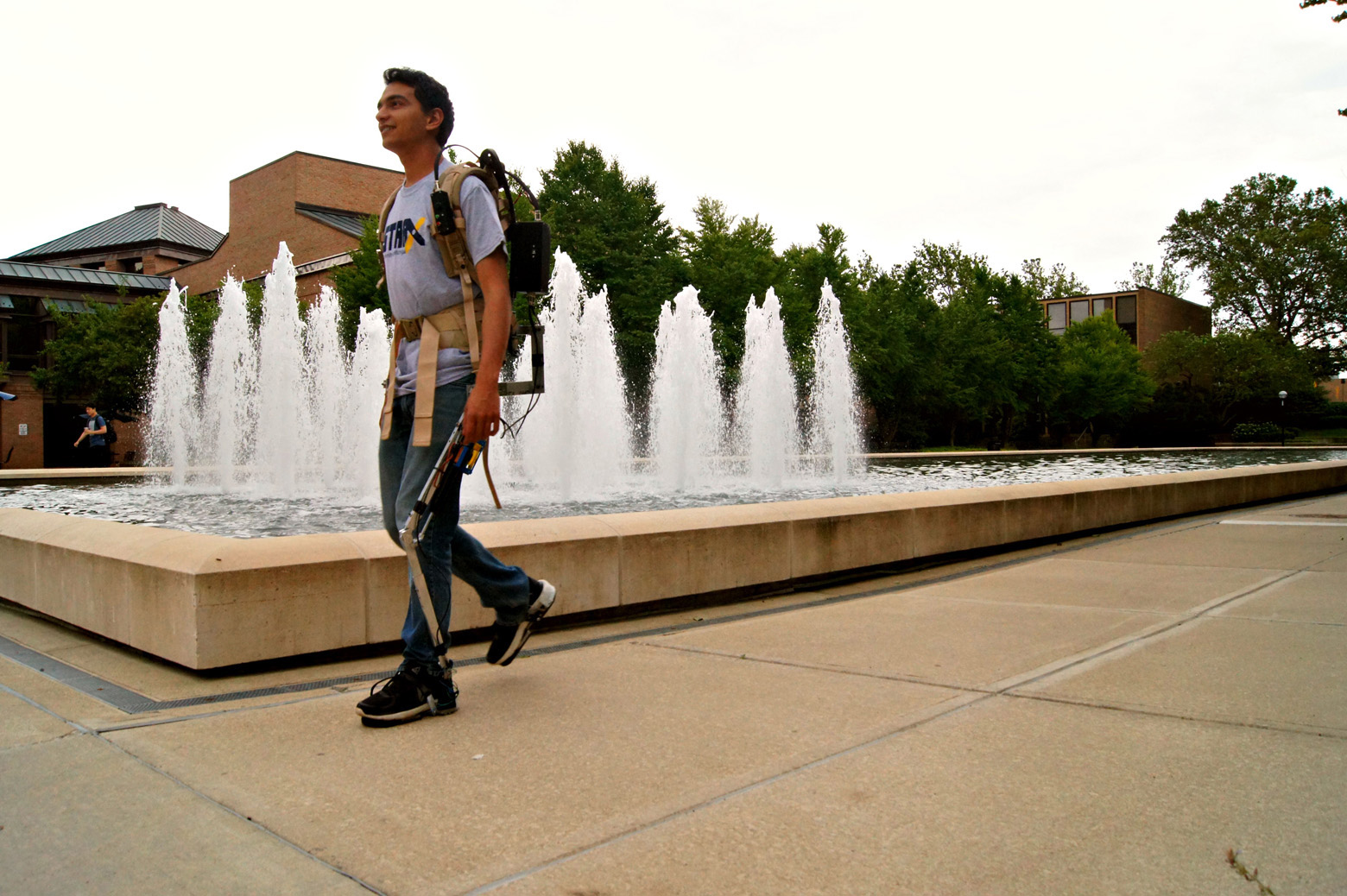New student exoskeleton team launches prototype
Student team STARX (STrength Augmenting Robotic eXoskeletons) completed its second year, focused on making practical powered exoskeletons that increase the effective strength of the user.

 Enlarge
Enlarge
Student team STARX (STrength Augmenting Robotic eXoskeletons) completed its second year, focused on making practical powered exoskeletons that increase the effective strength of the user. This year, they built a new load-bearing exoskeleton called the Lexo. In its finished state, this device will transfer a load of up to 100 lbs off of the user and into the ground so they do not feel the weight.
The Lexo is controlled by two hydraulic dampers attached across the knee joint, run by an Arduino in an attached backpack unit. The controller uses force sensors to determine whether the user’s foot is on the ground. When the foot is planted, the damper engages, locking the leg in place, and transferring the load to the ground. If the user lifts their leg, the dampers disengage, allowing the user to move freely.
Having the lexo up and running is a dream come true for all of us at STARX, and we can't wait to improve on it next year.
Owen Winship, EE major
Lexo was a followup to the team’s first exoskeleton, an upper-body strength enhancer called SAM-E. The design was intended to increase a user’s lifting strength by 30 lbs, without requiring the use of buttons or switches to control.
Currently, no collegiate competition exists for exoskeleton design. To fill this need, STARX is working to organize the first collegiate exoskeleton competition right here in Ann Arbor, to be called the Applied Collegiate Exoskeleton Competition (ACE). In doing so, the students hope to get more engineers working on exoskeleton research, which at the moment is very limited.
 MENU
MENU 
